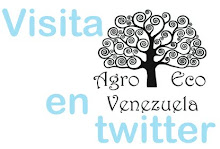Exploiting chemical ecology to manage hyperparasitoids in biological control of arthropod pests
Cusumano et al., 2019
Insect hyperparasitoids are fourth trophic level organisms that commonly
occur in terrestrial food webs, yet they are relatively understudied.
These top‐carnivores can disrupt biological pest control by suppressing
the populations of their parasitoid hosts, leading to pest outbreaks,
especially in confined environments such as greenhouses where
augmentative biological control is used. There is no effective
eco‐friendly strategy that can be used to control hyperparasitoids.
Recent advances in the chemical ecology of hyperparasitoid foraging
behavior have opened opportunities for manipulating these top‐carnivores
in such a way that biological pest control becomes more efficient. We
propose various infochemical‐based strategies to manage
hyperparasitoids. We suggest that a push‐pull strategy could be a
promising approach to ‘push’ hyperparasitoids away from their parasitoid
hosts and ‘pull’ them into traps. Additionally, we discuss how
infochemicals can be used to develop innovative tools improving
biological pest control (i) to restrict accessibility of resources (e.g.
sugars and alternative hosts) to primary parasitoid only or (ii) to
monitor hyperparasitoid presence in the crop for early detection. We
also identify important missing information in order to control
hyperparasitoids and outline what research is needed to reach this goal.
Testing the efficacy of synthetic infochemicals in confined
environments is a crucial step towards the implementation of chemical
ecology‐based approaches targeting hyperparasitoids. © 2019 The Authors.
Pest Management Science published by John Wiley & Sons Ltd on behalf of Society of Chemical Industry.

Infochemical‐based searching behavior of hyperparasitoids. (A) In the
natural environment, hyperparasitoids find their parasitoid hosts by
exploiting plant‐derived chemical cues (HIPVs) and cues associated with
the parasitized herbivores. (B) In the agricultural environment, the
same infochemicals could be used in management strategies to divert
hyperparasitoids away from parasitized herbivores and lure them towards
point‐source attraction devices such as sticky traps. HIPVs,
herbivore‐induced plant volatiles; mVOCs, microbial volatile organic
compounds.
https://doi.org/10.1002/ps.5679
.











No hay comentarios:
Publicar un comentario